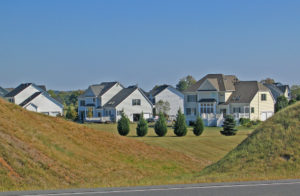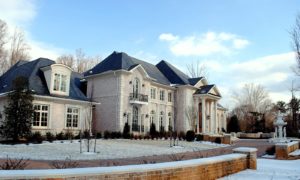The Struggling Luxury Housing Market
 “McMansions” in Leesburg, VA
“McMansions” in Leesburg, VA
Image credit: Brett VA via Wikimedia Commons
Recently, the luxury housing market in the U.S. has been falling behind the mainstream market. According to Realtor.com, the average sales price for the top 5% of sales grew 5.1% during 2017, while the overall market grew by nearly 7%. Javier Vivas at Realtor.com attributes the slowing luxury market to a widespread lack of affordable housing and tight inventory. He also stated that when it comes to new construction, we’re seeing a higher proportion of luxury homes which is creating a disproportionate supply.
An analysis by Mansion Global reveals that Miami-Dade County had a wide gap between its luxury and mainstream markets in 2017, where the average luxury home price fell 6.4% while the market as a whole experienced a price growth of over 9%. A similar trend is happening in California in the Bay Area. In 2017, luxury prices in these counties fell about 6% while prices in the market as a whole rose 9.7%. On the other side of the country in southern Connecticut, luxury prices experienced a decline of more than 8%.
CNBC explains that the high end of New York City’s housing market is getting hit hard, where prices for luxury homes in Manhattan fell 15% and sales decreased by 24% during the first quarter of 2018. Jonathan Miller, president of Miller Samuel, says that uncertainty over the new federal tax law is causing a strain in the market because it prevents residents in high-tax states like New York from deducting their state and local taxes. This causes problems at the higher end of the market because sellers are not lowering prices to account for these changes.
 Mansion in Potomac, MD
Mansion in Potomac, MD
Image credit: Granix Inc. via Flickr
Selling large and expensive homes is not an easy task in the current market. CNBC states that the largest 25% of all listings on Realtor.com receive 12% to 45% less views than a typical home in the market. In 2017, large single-family homes were selling up to 73% slower than a typical home, which equates to about 50 days. Artur Miller, founder and CEO of AMLUXE Realty, states that “hefty price tags for bigger homes contribute to their lengthier sale times because there is a smaller pool of buyers who can afford them.” Large home listings were up 2% in 2017, suggesting owners are dumping them faster, while listings of all homes were down 10% according to the Realtor.com data.
In addition to large houses, it is also difficult to sell specialty houses. These homes are already limiting to buyers because of their usual high value, and their uniqueness narrows the pool of prospects even more. In an excerpt on Mansion Global, Roh Habibi of The Habibi Group weighs in that “a customized home is like a piece of art, when it comes to the resale, you will need to find the lover who will appreciate the home.” The demographic interested and able to purchase a specially-designed luxury home is small at best.

Luxury home bathroom interior
Image credit: Ron Kikuchi via Flickr
Coldwell Banker Global Luxury put out a list of “power markets” to watch in 2018. Coldwell Banker defines power markets as “destinations in their own right, offering high-net-worth individuals a range of lifestyle opportunities, cultural experiences and educational opportunities. Other key indicators of “Power” status include airport accessibility, ease of doing business, a prestige brand presence and a housing stock that prioritizes privacy, views and exclusivity.” According to the report, the top buyer’s markets are Boca Raton, Miami, Park City, Santa Barbara, and Scottsdale, while the top seller’s markets are Denver, Nashville, San Francisco, Seattle, and Silicon Valley. Perhaps more cities across the U.S. will see higher demand for luxury homes as the millennial generation ages and begins to earn more money.